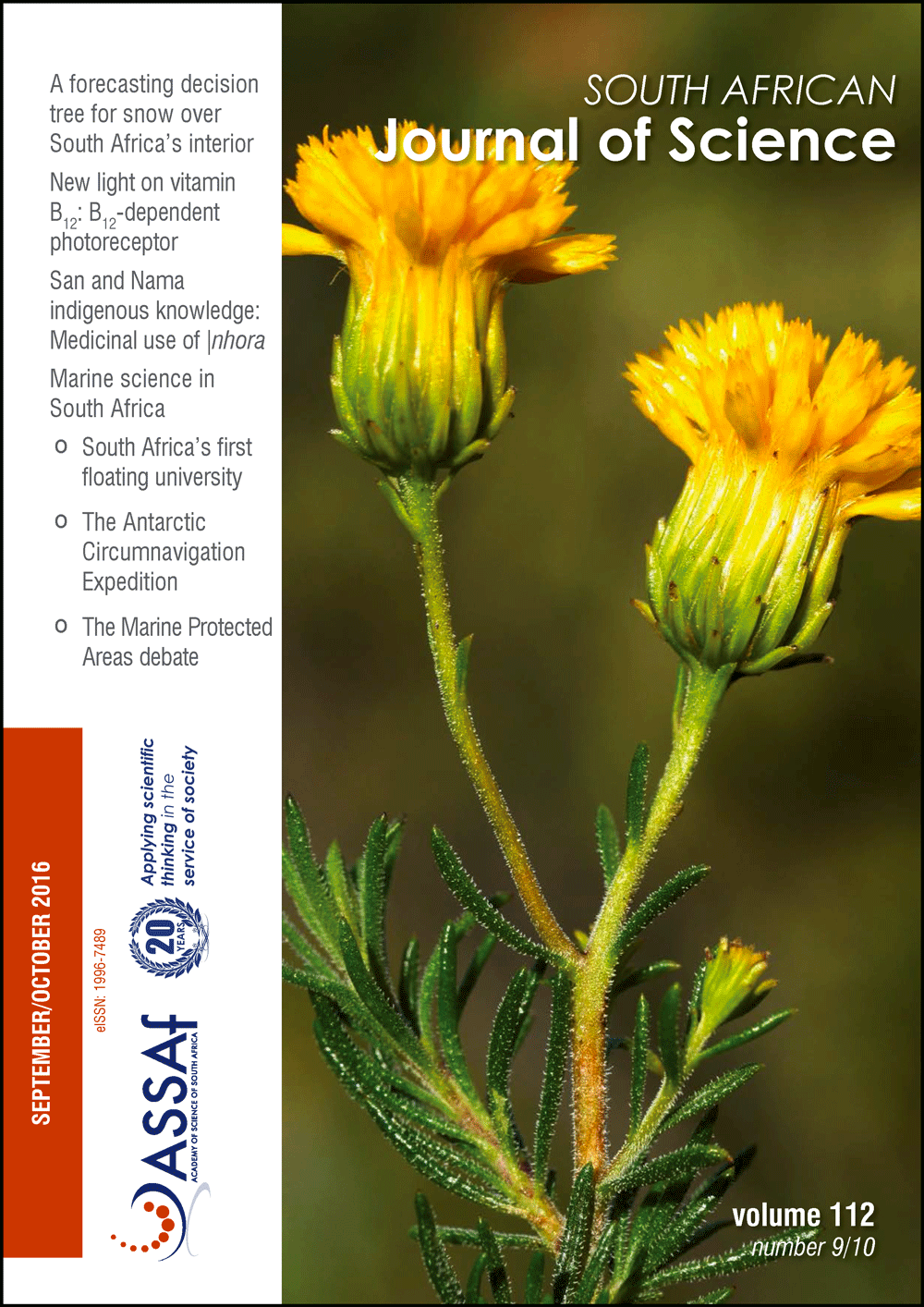Assessment of visualisation skills in biochemistry students
DOI:
https://doi.org/10.17159/sajs.2016/20150412Keywords:
external representations, Rasch model, visual literacyAbstract
In the field of biochemistry, the use of external representations such as static diagrams and animations has increased rapidly in recent years. However, their effectiveness as instructional tools can be hindered if students lack the visual literacy and cognitive skills necessary for processing and interpreting such representations. We aimed to identify and assess visualisation skills necessary for effective processing of external representations in biochemistry. We used a modified Bloom’s taxonomy to identify the cognitive skills essential for optimal visual literacy, and designed probes based on those skills to develop a test instrument. Student responses to the probes were scored and processed with the Rasch model. This approach enabled us to rate the degree of difficulty of each visualisation skill on a linear logit scale, and to generate a person–item map to measure biochemistry students’ level of visual literacy. The results showed that the identified visualisation skills could be measured reliably, and the Rasch model was effective both for ranking the skills according to level of difficulty and for estimating a student’s relative level of visual literacy.
Significance:- Addresses a recurring problem in biochemistry and similar fields.
- Identifies relevant skills to inform teaching and learning in biochemistry.
Published
Issue
Section
License

All articles are published under a Creative Commons Attribution 4.0 International Licence
Copyright is retained by the authors. Readers are welcome to reproduce, share and adapt the content without permission provided the source is attributed.
Disclaimer: The publisher and editors accept no responsibility for statements made by the authors
How to Cite
- Abstract 729
- PDF 552
- EPUB 187
- XML 268












.png)